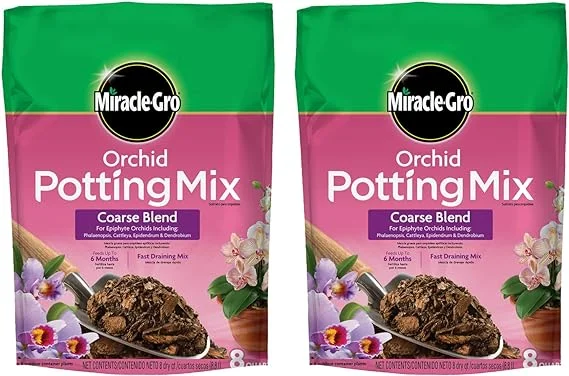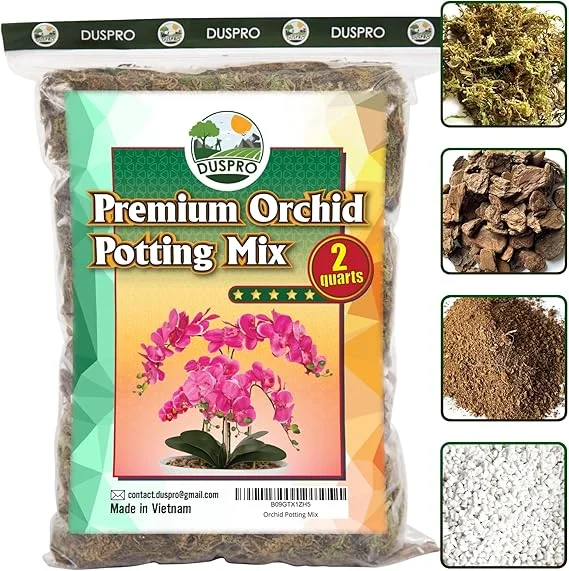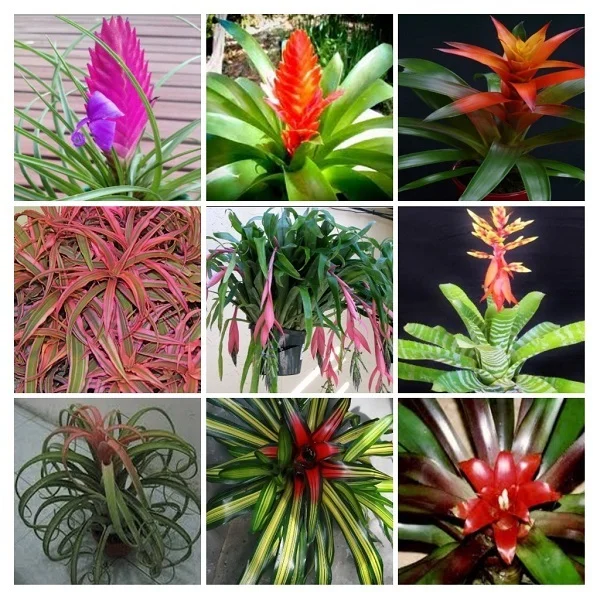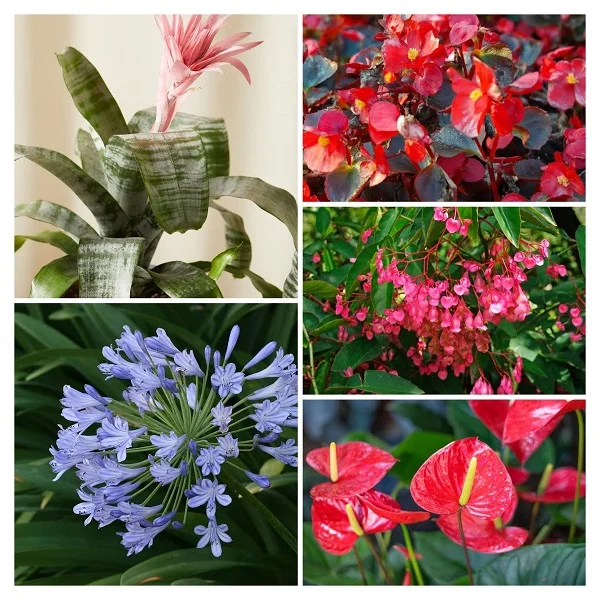Brassia Orchids (Spider Orchids) Indoor Care, Propagation and Common Problems
Some links in this post may be affiliate links
Brassia Orchids (Spider Orchids) grow best in bright indirect, warm and humid conditions and moderately moist, rich, loose, orchids soil coupled with regular monthly in the growing season.
Spider Orchids are popular orchids on account of their spectacular, delicately fragrant and long-lasting blooms.
Brassia Orchid flowers are notable for their characteristic long and spreading tepals, which lend them the common name 'Spider Orchid'. The reason why they look like spiders is that they attract female spider wasps for pollination.
These unique flowers not only add elegance to indoor spaces but are also fragrant and relatively easy to care for compared to other orchid varieties.
Spider Orchids bear large elliptic-oblong pseudobulbs with one or two leaves, a lateral unbranched numerously-flowered long-lasting flower-spike.
The Genus name 'Brassia' came from William Brass, a British botanist and illustrator who collected plants in Africa under the supervision of Sir Joseph Banks, an English naturalist, botanist and patron of natural sciences. The genus name is abbreviated as Brs in horticultural journals.
Brassia Orchids grow best when hanging or mounted on a vertical surface to allow the roots free air circulation.

Botanical name: Brassia
Subfamily: Epidendroideae
Tribe: Cymbidieae
Subtribe: Oncidiinae
Common name: Spider Orchid
Origin
Brassia Orchids are native to the rain forests of Mexico, Central America, West Indies and northern South America where they grow as epiphytes on tree canopies.
Flower
The flowers in Brassia Orchids are delicately fragrant and long-lasting and can be spotted yellow, cream, brownish or green.
Is Brassia Orchid toxic?
Spider Orchids are non-toxic to both humans and pets. They are safe to grow in the home.
Where to Buy
If you would like to add this spectacular orchid to your collection, Brassia Orchids are available online on Etsy (Link to Etsy).
Brassia Orchids Indoor Care Guide
This detailed care guide will cover light, watering, humidity, temperature, soil, fertilization, propagation methods, and common problems to help you grow healthy and thriving Spider Orchids indoors.
Brassia Orchids (Spider Orchids) blossom in bright indirect light (filterd light), average warmth of 16-290C, humidity of 60-70% and moderately moist, rich, loose, orchid's potting mix coupled with monthly feeding in the growing season.
Spider Orchids need regular pruning to keep them neat and discourage pest and disease infestation. Repotting is need when growth begins to suffer or the medium becomes completely broken down. Keep reading for more on these growing conditions and how to achieve them.

Watering
Water your Brassia Orchid thoroughly during the growing season and allow the top half of the soil to dry out between waterings. Keep the soil moderately moist but not soggy to avoid yellowing and rotting.
Decrease watering in the cold season as growth is minimal at this time. Do not let the soil dry out completely as it can result in wilting, droopy leaves and shriveled pseudobulbs.
Use tepid, chlorine-free water as the orchids are sensitive to chlorine and other chemicals dissolved in water. Avoid wetting the foliage as it can lead to fungal diseases.
Spider Orchids unlike Phalaenopsis (Moth) Orchids are more tolerant of dry soil conditions due to the presence of pseudobulbs and their thick leaves therefore, avoid overwatering.
Light Requirements
Spider Orchid grows best in bright indirect light. Keep it away from direct sunshine to avoid scorching which is characterized by unsightly, brown marks on the leaves.
A Brassia Orchid that is receiving the correct light has light-green leaves. Too little light will result in dark-green leaves while too much light will cause the leaves to be more yellowish than green.
Where the natural lighting is not adequate, consider growing your Spider Orchid under a grow light to promote a lush growth .
Regularly rotate the pot to ensure that the orchid receives adequate light on all sides for a balanced growth.
Temperature and Humidity
The best temperatures for Brassia Orchid are between 16-290C. The warmer days and cooler night temperatures with a difference of 10-150C are ideal for this orchid. The cool nights are essential to trigger flowering.
Make sure that there is good air circulation as the orchid cannot tolerate hot and stuffy conditions. Keep the orchid away from drafts to avoid sudden changes in temperature as they can cause reduced growth and blooming.
Spider Orchid requires a humidity of 60-70% to thrive. Set the pot on a wet pebble tray or use a cool mist humidifier to elevate humidity. Do not mist the leaves as it can lead to fungal diseases.
Potting Medium
The best potting medium for Brassia Orchid should be rich in organic matter, loose, free-draining bark soil to prevent it from getting soggy while providing the required nutrients. Most orchid potting mixes are ideal for this orchid.
Fertilizer
Feed Brassia Orchid every 4 weeks during the growing season with an orchid's fertilizer to promote a lush growth. Ensure to follow the manufacturer's instructions.
Withhold feeding in the cold season as growth is minimal at this time. Do not feed an orchid that is in flower as it may shorten the flowering period.
It is better to err on the side of underfeeding than overfeeding a Spider Orchid as overfeeding may result in loss of roots thus death of the orchid. Overfeeding can also lead to vegetative growth instead of flower production.
Pruning & Grooming
Pruning Brassia Orchid is easy. Remove dead and diseased leaves to keep the orchid neat as well as minimize pest and disease infestations.
When flowering is over, cut the flower stalk 1 inch above the 3rd node from the bottom to encourage more flower production. Never cut healthy pseudobulbs, as they store nutrients for the plant.
Once in a while clean the leaves by damp-wiping with a soft cloth to get rid of dust and also discourage pest and disease infestations.
Repotting
Repot Brassia Orchid when the orchid has outgrown its pot and the new growth reaches out over the edge of the pot or when the soil has broken down completely.
Basically repotting a Spider Orchid every 2-3 years should be adequate. Repot only when new growth begins, shortly after blooming is over.
Use a pot with proper drainage holes or slits as the roots need good air circulation. The pot should be large enough to accomodate the roots of the orchid. Check out these ceramic orchid pots with a free slotted orchid pot liner on Amazon.
Use a loose, free-draining bark soil as the roots require good air circulation otherwise they begin to die. While repotting, shake off excess soil and trim off any dried and shrivelled pseudobulbs.
Brassia Orchids thrive when hanging or mounted on a vertical surface to allow the roots free air circulation. If growing the orchid in a hanging basket, replace the potting medium regularly.
Care after Flowering
After flowering give Brassia orchids a rest period of about 6-8 weeks. Give it lower light, cooler temperatures, less water and stop feeding it.
- Lower light: Place the orchid in a dark spot like a cupboard or cover it with an opaque material.
- Cooler temperatures: Keep the temperature between 13–160C.
- Water less: Reduce watering until new growth appears. When new growth emerges, water lightly.
- Feeding: Stop fertilizing. As growth increases, fertilize lightly.
- Once growth has matured, use a fertilizer with more phosphorus and potassium and resume regular watering.
Propagation
Brassia Orchids (Spider Orchids) can be propagated at the beginning of the growing season once flowering is over from the rhizome.
How to propagate Brassia Orchid from the rhizome
- Carefully take the orchid out of its pot and shake off excess potting mix.
- Look for clumps with at least 3-4 pseudobulbs and their own root system.
- With a sharp clean knife, gently split the Brassia Orchid rhizome into sections while ensuring there are at least 3 shoots on each section.
- Seperate the roots attached to each division from the mother root-ball.
- Remove the old potting mix attached to the section roots.
- Select a pot about 1-2 inches larger than the pseudobulb and ensure the pot has enough drainage holes and slits to prevent root-rot.
- Place the section in the center of the pot and cover the roots with fresh orchid bark mix while ensuring that the bottom of the pseudobulb is level with the top of the soil.
- Stake each section to prevent it from toppling over.
- Place the set up in a bright indirect light and maintain the soil slightly moist to enhance root development.
- Once the orchid sections have established their own roots and have shown signs of new growth you can begin the routine care.
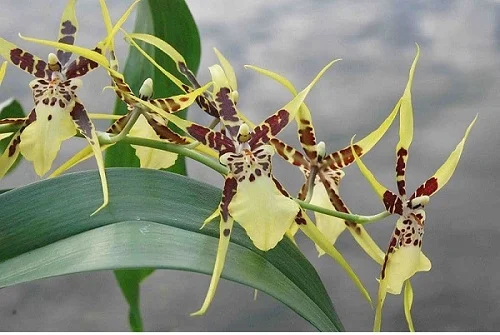
Brassia Orchid Problems and Solutions
Brassia Orchid (Spider Orchid) common growing problems include black leaf tips and edges, leaf spots, yellow leaves, drooping leaves, lack of blooms, pests and diseases among others. Keep reading for more on these problems and how to fix them.
Yellow leaves
The first cause of Brassia Orchid yellow leaves is too much light. Move the orchid to a shadier spot where it will receive bright indirect light away from direct sunlight.
The second possible cause of Brassia Orchid yellow leaves is overwatering reulting in soggy soil. Only water when the top soil feels dry and ensure the soil is well-drained and the pot has a drainage hole.
Black and dying leaf tips
One cause of black and dying leaf tips in Brassia Orchid is the presence of chemicals like chlorine and flourides in the water or accumulation of salts in the soil.
Use chlorine-free water only and flush out accumulated salts from the soil by running a stream of water through the soil for about 10 minutes until it comes out through the drainage holes.
The second cause of black and dying leaf tips in Brassia Orchid is low humidity. Set the pot on a wet pebble tray or use a cool mist humidifier to scale up humidity.
Mold on the leaves
Mold on the leaves in the Spider Orchid is an indication of powdery mildew which is promoted by over damp conditions, low temperatures and poor air circulation.
Misting the leaves may lead to mildew growth if the water does not evaporate quickly. Ensure that there is good air circulation and stop misting the orchid. Cut off the diseased leaves. Isolate the affected plant and treat it for the disease.
Pests
Common pests in Spider Orchids are aphids, mealybugs and spider mites. These pests are prevalent in dry air conditions and poorly ventilated spaces. Inspect your orchid weekly for pests. Treat any infected orchid with insecticidal soap or neem oil. Ensure to follow the manufacturer's instructions.
No blooms
One possible reason why Brassia Orchid is not blooming is too little light. Move the orchid to a brighter spot and ensure it is receiving bright indirect light or instal a grow light if the natural lighting is not adequate. Check out this guide on understanding light for houseplants.
The second reason for lack of blooms is overfeeding which results in vegetative growth at the expense of flowers. Feed Spider Orchid once monthly with an orchid's fertilizer as per the manufacturer's instructions.
The third reason for lack of blooms in Spider Orchids is inconsistent watering. Maintain the soil moderately moist in the growing season and slightly moist during the cold season.
Dark-green leaves
Dark green leaves in Brassia Orchid indicate that the orchid is not getting enough light. Position the orchid in a brighter spot where it can receive bright indirect light or instal a grow light if the natural lighting is not adequate.
Limpy and droopy leaves
Limpy and droopy leaves in Brassia Orchid are caused by underwatering. Do not allow the soil to dry out completely. Water the orchid thoroughly, maintain the soil moderately moist and allow only the top half of the soil to dry out between waterings.
Brown hard and dry leaf spots
Exposure of Brassia Orchid to direct sunshine will result in scorch marks which are brown hard and dry spots on the leaves. Place the orchid to a shadier spot or protect it from direct sunshine to prevent sunburn.
Brown soft leaf spots
Brown soft leaf spots in Brassia Orchid are an indication of a fungal disease. Remove the affected leaves immediately to prevent further spread.
Conclusion
Brassia Orchids (Spider Orchids) are beautiful, fragrant, and relatively easy to grow indoors. By providing the right light, humidity, watering, and fertilization, you can enjoy their unique blooms year after year.
Frequently Asked Questions
1. How often should I water my Brassia Orchid?
Allow the soil to dry slightly before watering and ensure that the pot has drainage holes.
2. Can Brassia Orchids tolerate low light?
Brassia Orchids prefer bright indirect light but can survive in moderate light. However, they will not bloom in deep shade.
3. What is the best pot for Brassia Orchids?
Use a well-ventilated orchid pot with drainage holes to prevent root rot.
4. Do Brassia Orchids rebloom?
Yes. With proper care, Brassia Orchids can bloom multiple times a year.
You liked it? Share on social media.
Related Content
Amazon Associates Disclosure
Homeplantsguide.com is a participant in the Amazon Services LLC Associates Program, an affiliate advertising program designed to provide a means for sites to earn advertising fees by advertising and linking to amazon.com.

